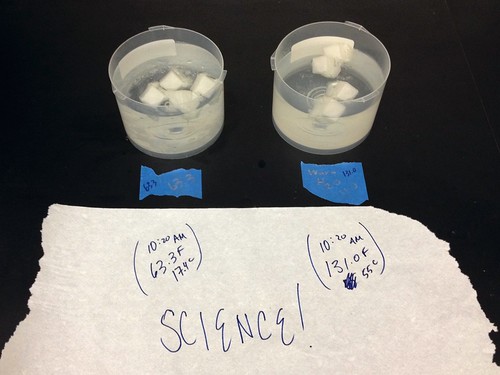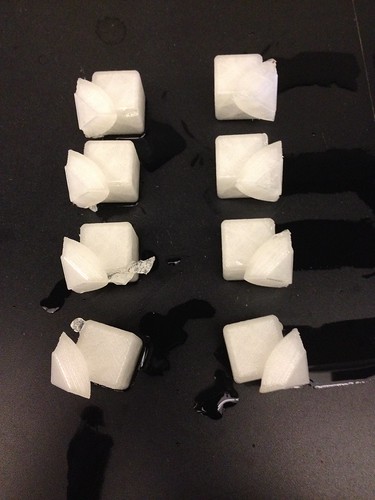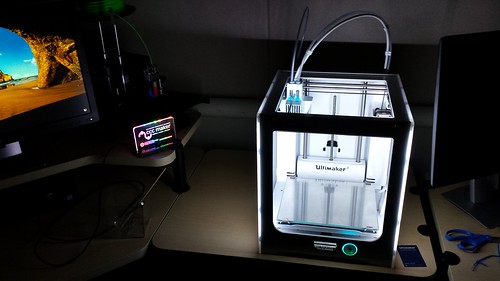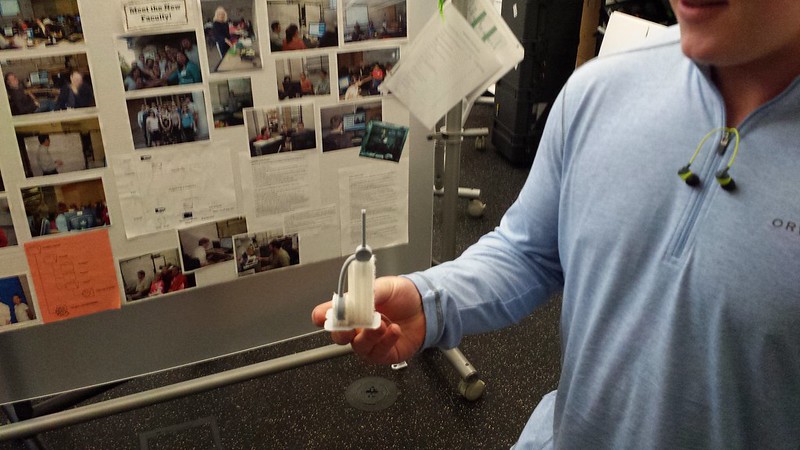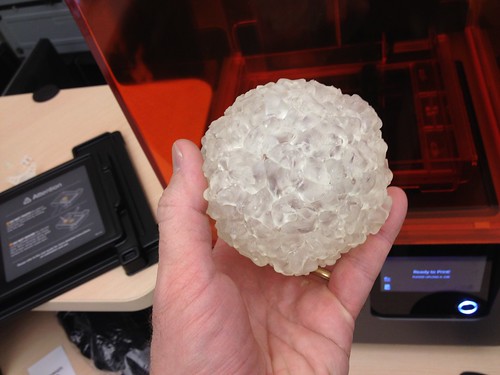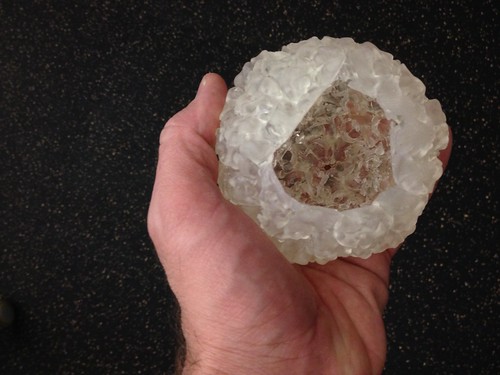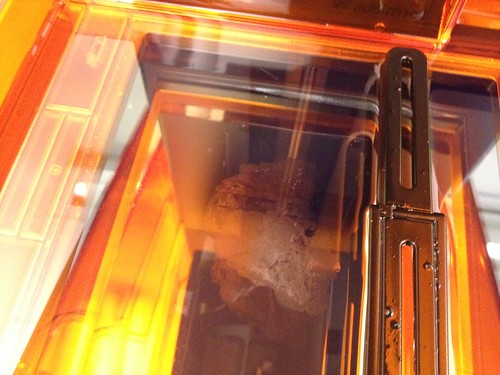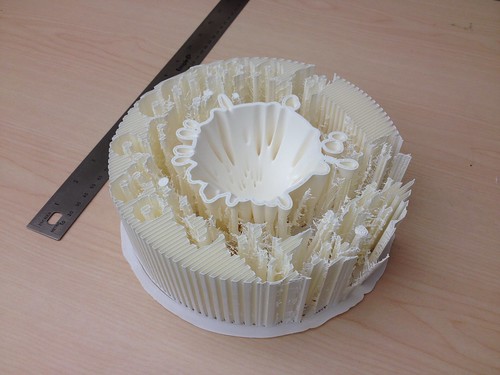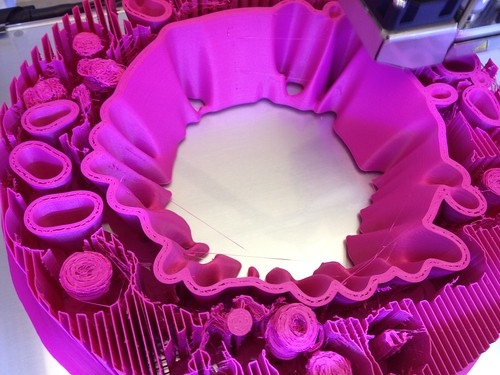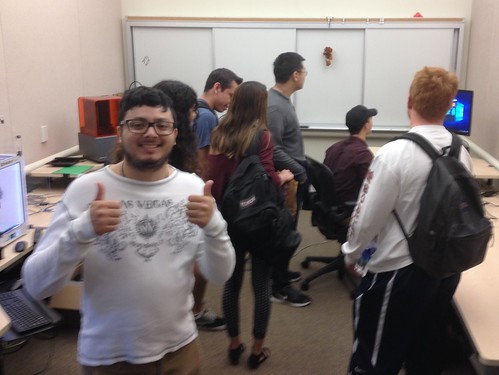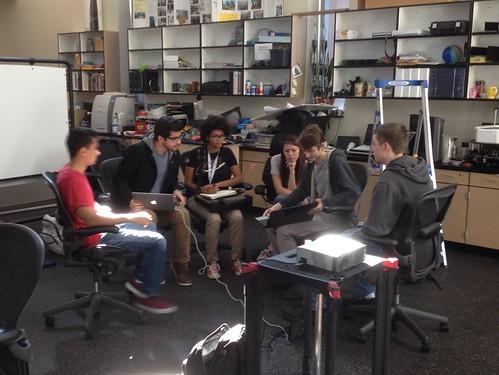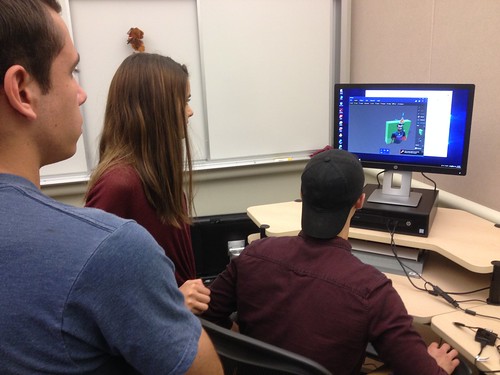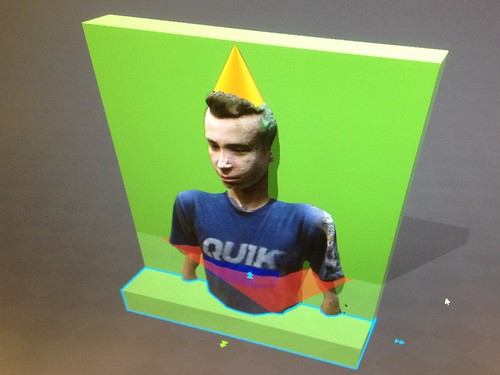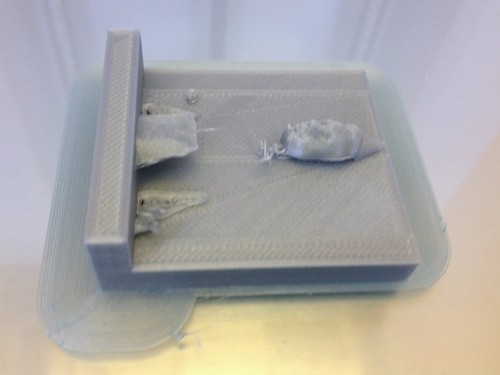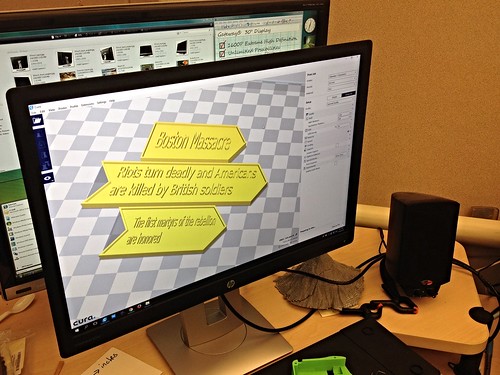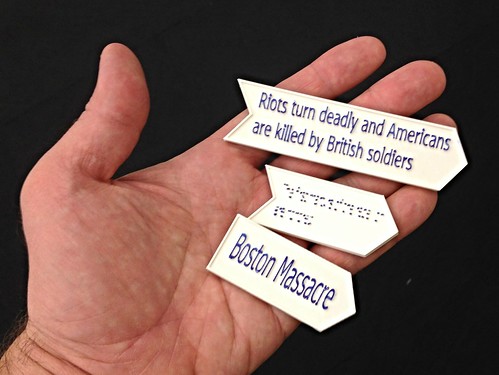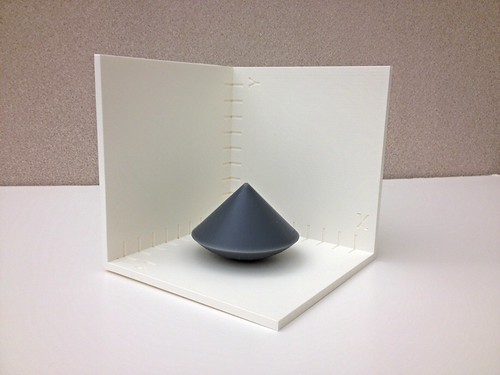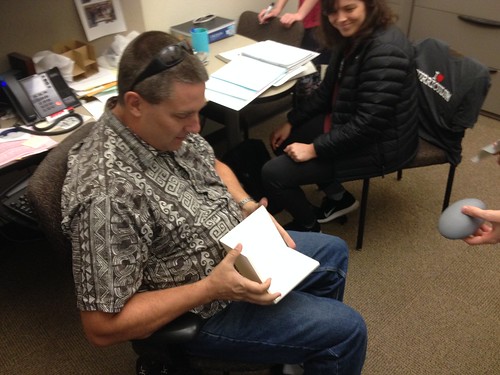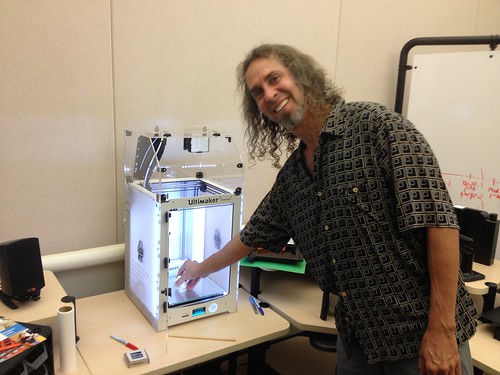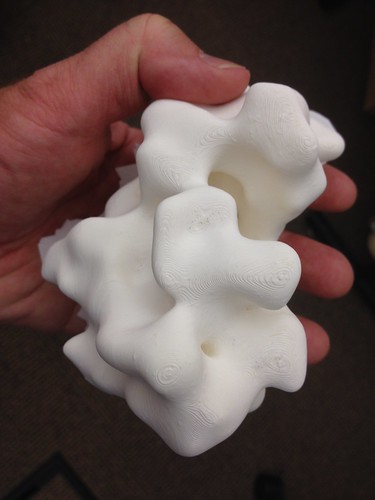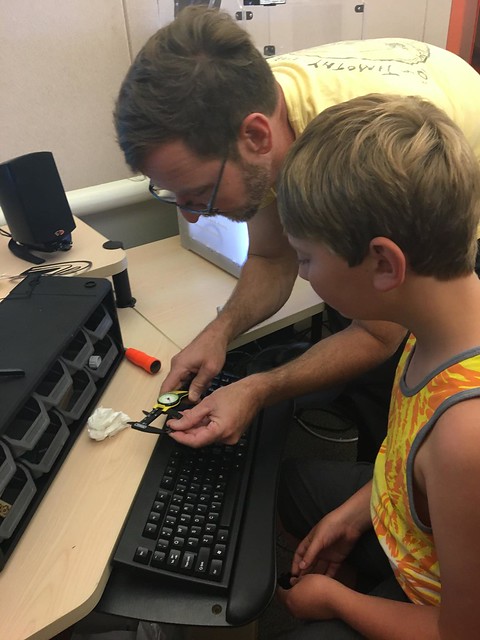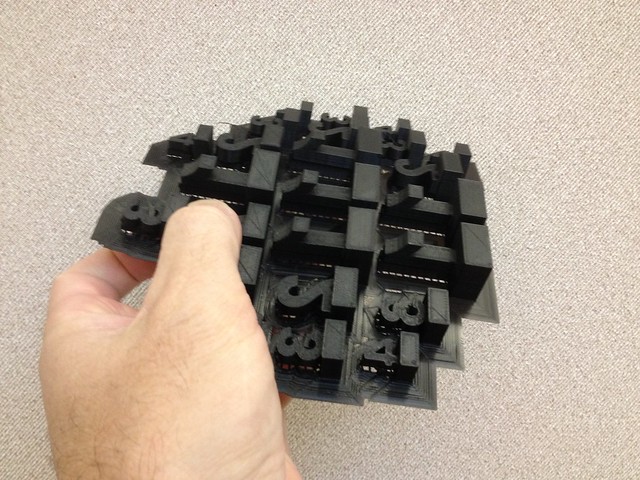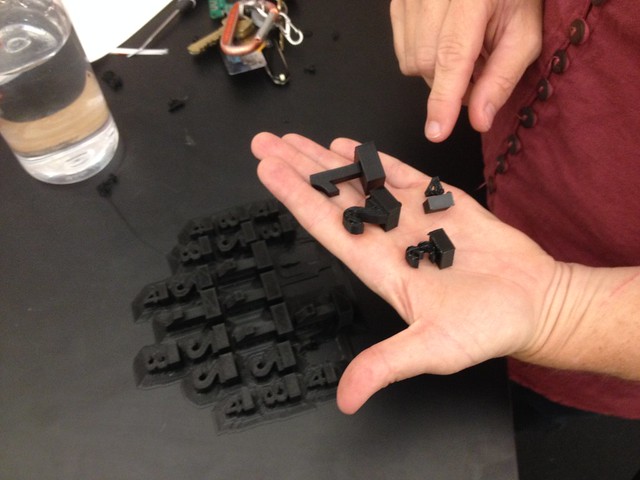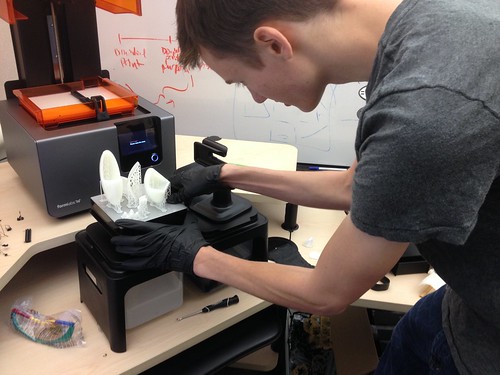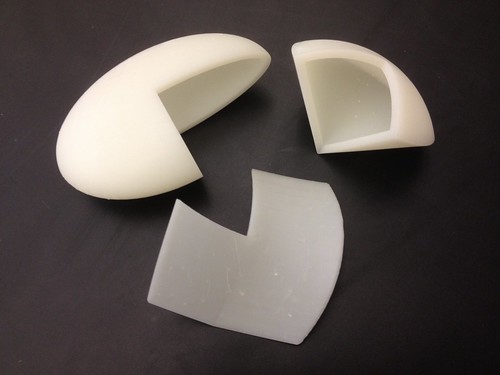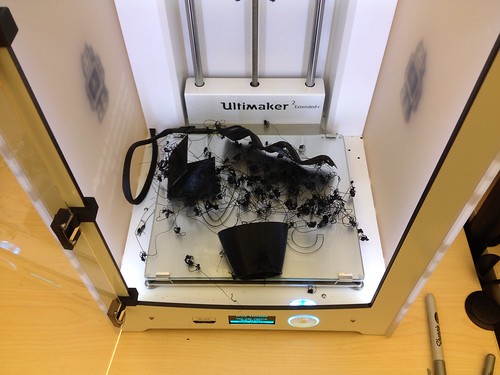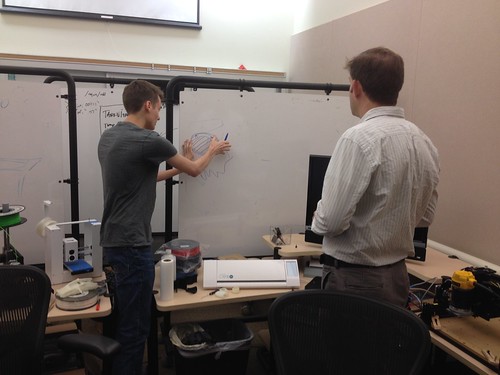Nathan and Thomas (students) have been printing using the new Ultimaker 3 with the PVA water-soluble support material, and we decided to run a quick little experiment to confirm what we thought we already knew: that warm water would dissolve the PVA quicker than cold water.
After 25 hours, 50 minutes, we pulled both sets out of the water to compare. Turns out that our assumptions were correct, at least for this barely scientific test. Even without any real proper measuring of the leftover gummy PVA on the prints, there was clearly less undissolved support material on the ones initially placed in hot water than on the ones places in room temperature water. I think we’ll borrow a hot plate stirrer from the Chemistry department and maybe try to run a few more controlled and better timed experiments.

